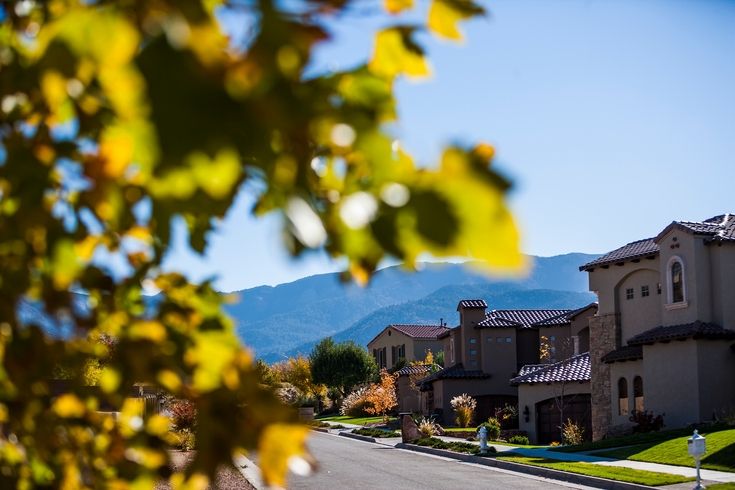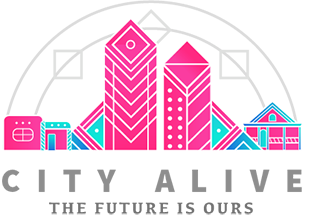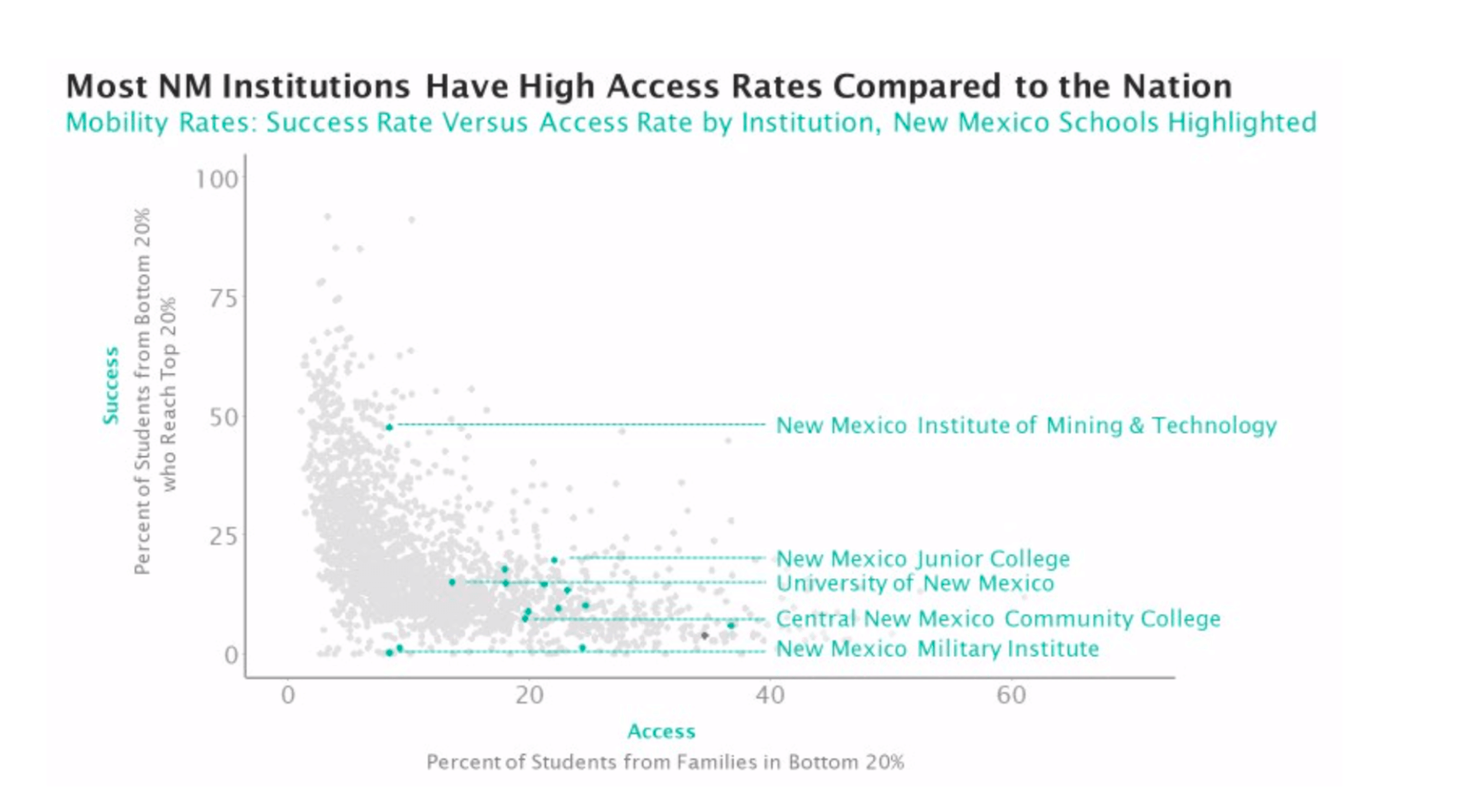Living in Albuquerque: The Geography of Upward Mobility

Those of us living in Albuquerque are more than likely aware of the inequities in our city. Some neighborhoods have high graduation rates and good health outcomes, while others face challenges like high rates of poverty, teen pregnancy and illness. What factors influence these outcomes? And what can we do as a city, as communities, as economic development organizations and as individuals to improve the economic opportunities of everyone living in Albuquerque?
These are important questions. That’s why it is particularly exciting that a new report has been released on economic mobility in Albuquerque neighborhoods. Through a Bloomberg Grant, a team from Opportunity Insights recently completed a project cataloging where Albuquerque stands today, and what we can do in the future to promote progress toward more equitable outcomes across communities.
The Team and Data Collected
This research started with Raj Chetty, the youngest tenured faculty in the history of Harvard’s economics department. He is also a recipient of the John Bates Clark Medal, which is given to economists under the age of 40 who have contributed significantly to the field of economic knowledge. Many expect he will win a Nobel Prize in the next few years — potentially for his pioneering approach using government data to show how American families fare across generations. His research is revealing striking patterns of upward mobility and stagnation.
Chetty’s work takes a close look at the American dream, the idea that children should be able to earn more than their parents. His organization, Opportunity Insights, has focused its research on that dream.
Chetty and the Opportunity Insights team are working to understand why some low-income neighborhoods demonstrate higher levels of upward mobility (children earning more than their parents), while others do not. With three decades worth of anonymized data (data that is no longer associated with an individual) including tax and census reports, Opportunity Insights has developed an impressive data model.
Albuquerque — The Findings
As you look at these findings, keep in mind that research and data give us an opportunity to make informed decisions and influence our future. The data below was drawn from the “The Geography of Upward Mobility in Albuquerque” by Opportunity Insights.
The Good:
Albuquerque has a number of high-mobility neighborhoods.
Opportunity Insights identified a few high-upward-mobility neighborhoods in Albuquerque that demonstrate a very positive intersection of above-average outcomes with below-average income levels. As one example, children in low-income families who moved from the South Los Altos neighborhood of Albuquerque, a low-upward mobility area near Eubank and Copper, to the S Y Jackson neighborhood, a high upward-mobility area at the intersection of Tramway and Montgomery, earn significantly more per year than those who move in their 20s.
The following map shows key zones of opportunity in Albuquerque:
The Not So Good:
Albuquerque's upward mobility rates are below the national average.
Low-income children living in Albuquerque have slightly lower rates of upward mobility compared to the national average. They grow up to make around $30,000 in adulthood, $4,000 less than the national median of $34,000.
High college admission, but lower earnings.
College plays a key role in upward mobility, opening doors to opportunities for higher paying jobs. The Opportunity Insights team found that while schools in New Mexico, on average, have higher access rates than the rest of the nation, levels of both access and success vary across institutions. The University of New Mexico, for example, demonstrated an access and success rate in the middle of the national distribution, with a mobility rate of 2 percent. However, community colleges in the Albuquerque area admit a large percentage of low-income students, but have more limited success in moving low-income students to higher earnings.
The following image shares how New Mexico’s colleges track to colleges across the nation.
So, What Do We Need to Ask Ourselves?
What are the contributing factors that determine the neighborhoods with more upward mobility? This report by Opportunity Insights shed light on a few areas worthy of more investigation:
1) Housing:
There are numerous barriers that prevent low-income families from moving to high-opportunity neighborhoods. Where and how can Albuquerque increase access to high-upward-mobility areas — either through providing housing vouchers or by increasing the availability of affordable housing?
2) Higher education:
Institutions of higher education can have a significant impact on improving the long-term success of low-income students. Albuquerque has strides to make in increasing the economic mobility of its graduates. In the spirit of improvement:
- What roles might organizations and the city play in helping to expand access for low-income students to attend high mobility rate institutions in the state/region?
- Opportunity Insights shared research developed at the Collegiate Leaders in Increasing Mobility (CLIMB) conference (a conference dedicated to advancing upward mobility through higher education) — what could we learn from this research?
3) Explore what’s working:
There are several neighborhoods in Albuquerque where low-income children grow up to have above-average outcomes. We can consider:
- What are the characteristics of areas with high levels of upward mobility?
- What conditions on the ground can help explain these positive outcomes?
- What investments in low-opportunity neighborhoods can increase upward mobility?
4) Aligned partnerships:
- What are the ways that we can galvanize our community to improve outcomes for low-income residents?
- Are there neighborhood-focused efforts that we’ve already learned lessons from?
- What partners do we need at the table to drive upward mobility in Albuquerque?
As a community we have the power and the knowledge to make a difference in the future of our children and our city. Data can make a powerful change, but only if we apply lessons and continue to pursue results.
Connect the Dots
City Alive is committed to collecting, analyzing and presenting data to guide Albuquerque as it bridges the gap in business ownership and leadership with a focus on people of color. Our Data, Impact and Evaluation Team (DIET) — made up of UNM, the City of Albuquerque, Innovate ABQ, WESST, the SVEDC, Mission: Graduate, Rhonehorse Consulting, and the Grant Plant — meets regularly to evaluate program- and population-level data, tracking the effectiveness of City Alive as a collective impact initiative.







